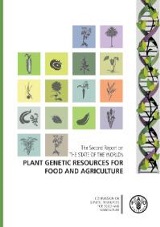National forest inventories (NFI) are systematic collections of data on the location, composition, and distribution of forest resources.
The generated data allows for the assessment of various forest products and services and is a prerequisite for sustainable forest management.
NFIs are multi-purpose and can be used to capture data on, for example, biodiversity, socio-economic aspects of forest use, and carbon stored. These data inform forest management decisions, national policy, and international reporting requirements.
Overview and FAO contribution
National information needs on forests have grown considerably in recent years, evolving from forest area and growing stock information to key aspects of sustainable forest management, such as the role of forests in the conservation of biodiversity and the provision of other ecosystem services. More recently, information on changes in carbon stocks, socio-economic aspects (including contributions to livelihoods and poverty reduction), governance and broader land use issues has become critical for national planning. To help realize the contribution of forests to energy and food security, policymakers require more and better data, including information on the demand for food from forests, wood energy, wood fibre and employment and rural development issues.
Understanding forest resources and their changes is key to national and international environmental and developmental policy processes and is required by many international agreements, including the United Nations Framework Convention on Climate Change (UNFCCC), the Convention on Biological Diversity (CBD), the United Nations Convention to Combat Desertification (UNCCD), the United Nations Forest Instrument, and the Sustainable Developments Goals (SDGs).
Broadening the scope of national forest inventories results in establishing and running National Forest Monitoring Systems (NFMS). NFMS is a complex scientific-technical exercise that can be an organizational and institutional challenge. The process has a direct link to policy, as it informs management and decision-makers about the sustainable use of forest resources and the efficient protection and conservation of forest ecosystems. Accordingly, an NFMS supports governments in fulfilling their obligations to continually develop, monitor and report on forest resources, which may include trees outside forests as well as other land cover classes.
During recent years, countries have improved the process for forest and land use data collection and analysis. However, there are still gaps on information and capacities to produce and maintain this information.
Europe and Central Asia
This includes the Europe and Central Asia region, where there are still countries with low capacities on forest and land use assessment.
To facilitate the design and implementation of NFMS, FAO has published the Voluntary Guidelines on National Forest Monitoring, (VGNFM) as requested by the Committee on Forestry. The guidelines include good practice principles, guidelines and a general framework. Incorporated in the guidelines are decision-support tools for planning and implementing a multi-purpose NFMS grounded in nationally appropriate and scientifically sound practice, taking into consideration domestic information needs and reporting requirements.
The FAO Regional Office for Europe and Central Asia has been supporting the design and implementation of NFMS in Armenia, Azerbaijan, Belarus, Kyrgyzstan, Republic of Moldova, North Macedonia, Serbia and Uzbekistan.
Various FAO tools have been promoted in addition to the VGNFM:
- National Forest Inventory e-learning modules: The training materials provide an overview of the key phases of the planning and implementation of a National Forest Inventory (NFI). The modules have been designed keeping in mind the learning needs of forestry technicians and new generations of foresters and forestry students who are interested in learning more about the steps involved in an NFI.
- E-learning course on forest and transparency under the Paris Agreement: FAO elearning Academy. This course teaches about the Enhanced Transparency Framework (EFT) under the Paris Agreement. It is useful to those wishing to understand the importance of forest-related data collection, analysis and dissemination in meeting the Enhanced Transparency Framework requirements. Available in Arabic, Chinese, French, Russian and Spanish.
- Open Foris: Free, open-source solutions for environmental monitoring, consisting of a set of tools facilitating flexible and efficient data collection, analysis and reporting.
- Collect Earth: A free, open-source application for land monitoring developed by FAO with the support of Google Earth Outreach. Supported by Google cloud and desktop technologies, it facilitates access to multiple freely available repositories of satellite imagery. Collect Earth - land monitoring through visual interpretation.
- SEPAL provides comprehensive image-processing capabilities and enables the detection of small-scale changes in forests, such as those associated with illegal or unsustainable timber harvesting. Users can query and process satellite data quickly and efficiently, tailor their products for local needs, and swiftly produce sophisticated and relevant geospatial analyses. Harnessing cloud-based supercomputers and modern geospatial data infrastructures (e.g. Google Earth Engine), SEPAL enables access to and processing of historical satellite data as well as newer data from Landsat and higher-resolution data from Europe's Copernicus programme and others. Further information: https://www.fao.org/land-water/land/land-governance/land-resources-planning-toolbox/category/details/en/c/1026549/
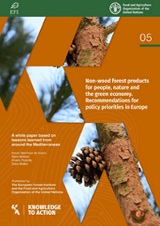
Non-wood forest products for people, nature and the green economy - Knowledge to Action 5
30/09/2020
Martinez de Arano, I, Maltoni S., Picardo A., Mutke S.
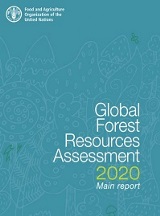
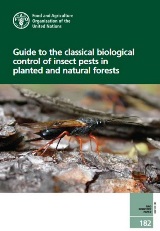
Guide to the classical biological control of insect pests in planted and natural forests
10/09/2019
Kenis, M.; Hurley, B.P.; Colombari, F.; Lawson, S.; Sun, J.; Wilcken, C.; Weeks, R. and Sathyapala, S.
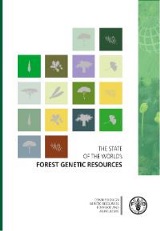
Links
- International day of forests
- XV World forestry congress
- Forest law enforcement, governance and trade (FAO-EU FLEGT programme)
- Forest & farm facility
- Global forest education project
- Global Forest information service
- Mountain partnership
- REDD+ Reducing emissions from deforestation and forest degradation
- United Nations forum on forests
- Collaborative partnership on sustainable wildlife management
- Collaborative partnership on forests
Contact
Norbert Winkler-Ráthonyi
Forestry officer
Budapest, Hungary
Peter Pechacek
Forestry officer
Ankara, Turkey

